




Do you have a question about the Fujitsu Primergy RX300 S3 and is the answer not in the manual?
Overview of the PRIMERGY RX300 S3 server features.
Details on the software provided with the server, including ServerStart.
Identifies and describes the server's front and rear components.
Explains basic server operations like powering on/off and media handling.
Outlines the workflow from server installation to start of operation.
Covers installing internal options and performing necessary hardware settings.
Guides the decision process for choosing an OS installation method.
Lists important notes and cautions before starting OS installation.
Details system requirements and installation of ServerStart on a client.
Step-by-step wizard for OS installation and hardware configuration.
Allows setting installation information in advance via a configuration file.
Enables manual partition formatting and OS installation.
Explains methods for installing the OS remotely over the network.
Details how to perform installations on multiple servers using ServerStart.
Explains how to prepare driver installation disks for OS installation.
Provides step-by-step procedures for manually installing the OS.
Covers the installation of LAN drivers, differing by OS and network adapter.
Configures settings for obtaining memory dumps and paging files for debugging.
Guides the creation of a system recovery disk for restoring the system.
Explains how to store BIOS setup utility configuration information.
Describes how to create hardware configuration tools and DOS floppy disks.
Covers essential settings and hotfixes required before server operation.
Details advanced setup for LAN drivers using Broadcom Advanced Control Suite (BACS).
Explains advanced setup for LAN drivers using Intel® PROSet.
Software for performing array configuration, disk initialization, and monitoring.
Monitors server hardware status, notifying administrators of errors in real-time.
A tool for collecting failure investigation information and server environment data.
Lists types of internal options that can be installed on the server.
Provides instructions on how to remove and attach the server's top cover.
Explains the procedure for installing an optional CPU into the server.
Details the process of installing additional memory modules to enhance performance.
Covers notes on expansion cards, their types, and installation procedures.
Explains how to install internal hard disk units into the server's storage bays.
Describes the installation of an internal backup device in the server.
Details how to install an internal DVD-RAM drive unit by replacing the CD-ROM drive.
Explains the installation of additional power supply units for redundant power.
Provides instructions on connecting external SCSI devices like hard disk cabinets.
Explains how to make settings in the BIOS Setup Utility and its items.
Details how to start and exit the BIOS Setup Utility.
Configures system startup options and boot sequence.
Sets peripheral device and PCI device options.
Explains how to check server status and perform daily maintenance.
Explains resolutions for server issues and error messages.
Explains how to use Server Management Tools to operate system event logs.
Details security features to protect server hardware and software.
Emphasizes the importance of periodic data backups and lists backup devices.
Guides the process of restoring the system using recovery information.
Explains the procedure for reinstalling the operating system.
Details the specifications for the diskless type of the server.
Lists the specifications for installable CPU modules.
Provides specifications for installable memory modules.
Details the specifications for internal hard disk units.
Specifies the function and model of the basic card slot conversion kit.
Lists the specifications for the parallel port option.
Lists the specifications for the serial port option.
Provides guidelines for selecting the appropriate power cord.
Covers BIOS configuration and PC connection for remote control.
Explains the functions and features of the Remote Management Controller (iRMC).
Details BIOS configuration and PC connection for the Remote Management Controller.
Shows the window that appears when starting the Remote Management Controller.
Explains the license key for enabling console redirection and remote storage.
Provides instructions on how to dispose of the server as industrial waste.
Instructions for disposing of used-up batteries as industrial waste.
Guidelines for disposing of liquid crystal displays as industrial waste.
Overview of the PRIMERGY RX300 S3 server features.
Details on the software provided with the server, including ServerStart.
Identifies and describes the server's front and rear components.
Explains basic server operations like powering on/off and media handling.
Outlines the workflow from server installation to start of operation.
Covers installing internal options and performing necessary hardware settings.
Guides the decision process for choosing an OS installation method.
Lists important notes and cautions before starting OS installation.
Details system requirements and installation of ServerStart on a client.
Step-by-step wizard for OS installation and hardware configuration.
Allows setting installation information in advance via a configuration file.
Enables manual partition formatting and OS installation.
Explains methods for installing the OS remotely over the network.
Details how to perform installations on multiple servers using ServerStart.
Explains how to prepare driver installation disks for OS installation.
Provides step-by-step procedures for manually installing the OS.
Covers the installation of LAN drivers, differing by OS and network adapter.
Configures settings for obtaining memory dumps and paging files for debugging.
Guides the creation of a system recovery disk for restoring the system.
Explains how to store BIOS setup utility configuration information.
Describes how to create hardware configuration tools and DOS floppy disks.
Covers essential settings and hotfixes required before server operation.
Details advanced setup for LAN drivers using Broadcom Advanced Control Suite (BACS).
Explains advanced setup for LAN drivers using Intel® PROSet.
Software for performing array configuration, disk initialization, and monitoring.
Monitors server hardware status, notifying administrators of errors in real-time.
A tool for collecting failure investigation information and server environment data.
Lists types of internal options that can be installed on the server.
Provides instructions on how to remove and attach the server's top cover.
Explains the procedure for installing an optional CPU into the server.
Details the process of installing additional memory modules to enhance performance.
Covers notes on expansion cards, their types, and installation procedures.
Explains how to install internal hard disk units into the server's storage bays.
Describes the installation of an internal backup device in the server.
Details how to install an internal DVD-RAM drive unit by replacing the CD-ROM drive.
Explains the installation of additional power supply units for redundant power.
Provides instructions on connecting external SCSI devices like hard disk cabinets.
Explains how to make settings in the BIOS Setup Utility and its items.
Details how to start and exit the BIOS Setup Utility.
Configures system startup options and boot sequence.
Sets peripheral device and PCI device options.
Explains how to check server status and perform daily maintenance.
Explains resolutions for server issues and error messages.
Explains how to use Server Management Tools to operate system event logs.
Details security features to protect server hardware and software.
Emphasizes the importance of periodic data backups and lists backup devices.
Guides the process of restoring the system using recovery information.
Explains the procedure for reinstalling the operating system.
Details the specifications for the diskless type of the server.
Lists the specifications for installable CPU modules.
Provides specifications for installable memory modules.
Details the specifications for internal hard disk units.
Specifies the function and model of the basic card slot conversion kit.
Lists the specifications for the parallel port option.
Lists the specifications for the serial port option.
Provides guidelines for selecting the appropriate power cord.
Covers BIOS configuration and PC connection for remote control.
Explains the functions and features of the Remote Management Controller (iRMC).
Details BIOS configuration and PC connection for the Remote Management Controller.
Shows the window that appears when starting the Remote Management Controller.
Explains the license key for enabling console redirection and remote storage.
Provides instructions on how to dispose of the server as industrial waste.
Instructions for disposing of used-up batteries as industrial waste.
Guidelines for disposing of liquid crystal displays as industrial waste.
| Tcase | 78 °C |
|---|---|
| Bus type | FSB |
| FSB Parity | Yes |
| Processor cache | 4 MB |
| Processor cores | 2 |
| Processor model | 5080 |
| Processor series | Intel Xeon 5000 Series |
| Processor socket | LGA 771 (Socket J) |
| Processor threads | 4 |
| Processor codename | Dempsey |
| Motherboard chipset | Intel® 5000P |
| Processing Die size | 162 mm² |
| Processor frequency | 3.73 GHz |
| Processor cache type | L2 |
| Processor lithography | 65 nm |
| Processor system type | DP |
| Processor manufacturer | Intel |
| Processor package size | 37.5 x 37.5 mm |
| Processor front side bus | 1066 MHz |
| Processor operating modes | 64-bit |
| ECC supported by processor | No |
| Thermal Design Power (TDP) | 130 W |
| Processor core voltage (AC) | 1.25 - 1.40 V |
| CPU multiplier (bus/core ratio) | 14 |
| Number of Processing Die Transistors | 376 M |
| Maximum graphics card memory | 8 MB |
| Memory slots | 8 |
| Internal memory | 2 GB |
| Internal memory type | DDR2-SDRAM |
| Maximum internal memory | 32 GB |
| Memory layout (slots x size) | 2 x 1 GB |
| Networking features | Ethernet/Fast Ethernet/Gigabit Ethernet |
| Expansion slots | 1 x PCIe x8, 2 x PCIe x4, 2 x PCI-X |
| USB 2.0 ports quantity | USB 2.0 ports have a data transmission speed of 480 Mbps, and are backwards compatible with USB 1.1 ports. You can connect all kinds of peripheral devices to them. |
| Noise level | 56 dB |
| Chassis type | Rack (2U) |
| Compatible operating systems | Windows Server 2003, Novell SUSE Linux Enterprise Server, Red Hat Enterprise Linux, VMware ESX |
| I/O ports | 8 x SAS |
| Power supply | 600 W |
| Power requirements | 100 - 240V, 50/60 Hz |
| Operating temperature (T-T) | 10 - 35 °C |
| Safety | IEC 60950-1, EN 60950-1 |
| Electromagnetic compatibility | EN 55 022 A, EN 55024, EN 61000-3-2 / -3-3 |
| RAID levels | 1, 5, 10, 50 |
| Processor ARK ID | 27213 |
| Depth | 785 mm |
|---|---|
| Width | 483 mm |
| Height | 86 mm |
| Weight | 25000 g |
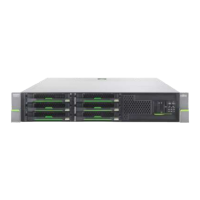
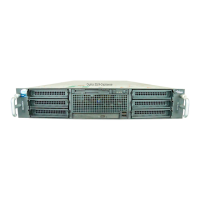
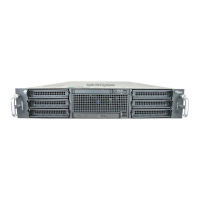
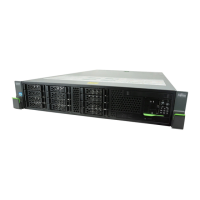
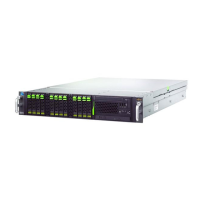
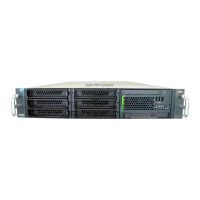
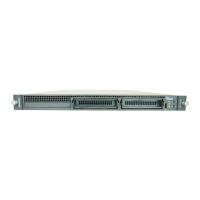
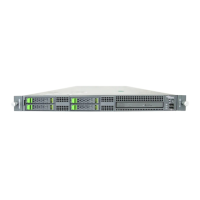

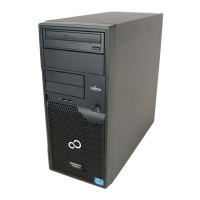
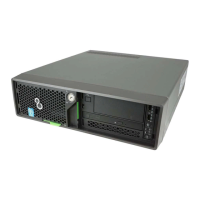
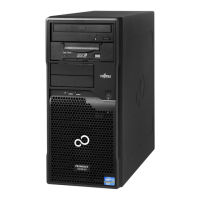
